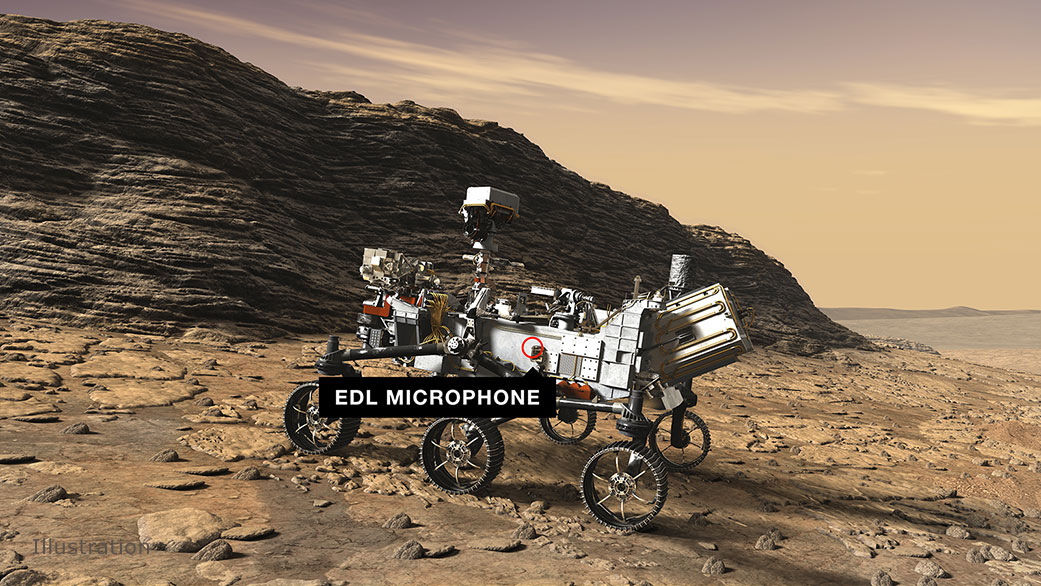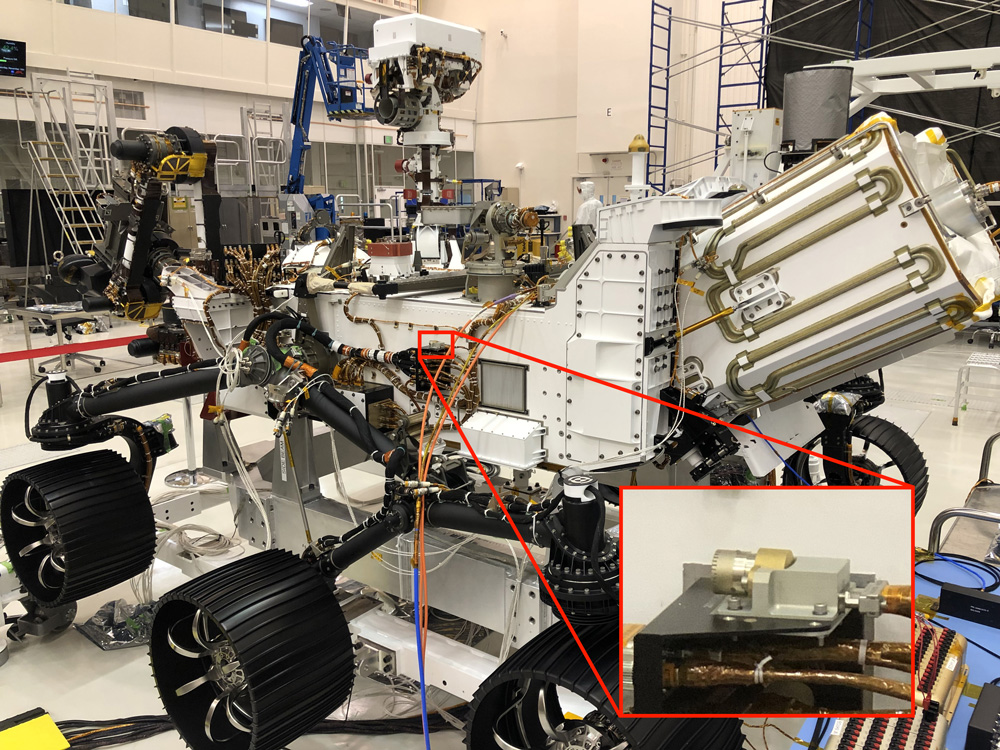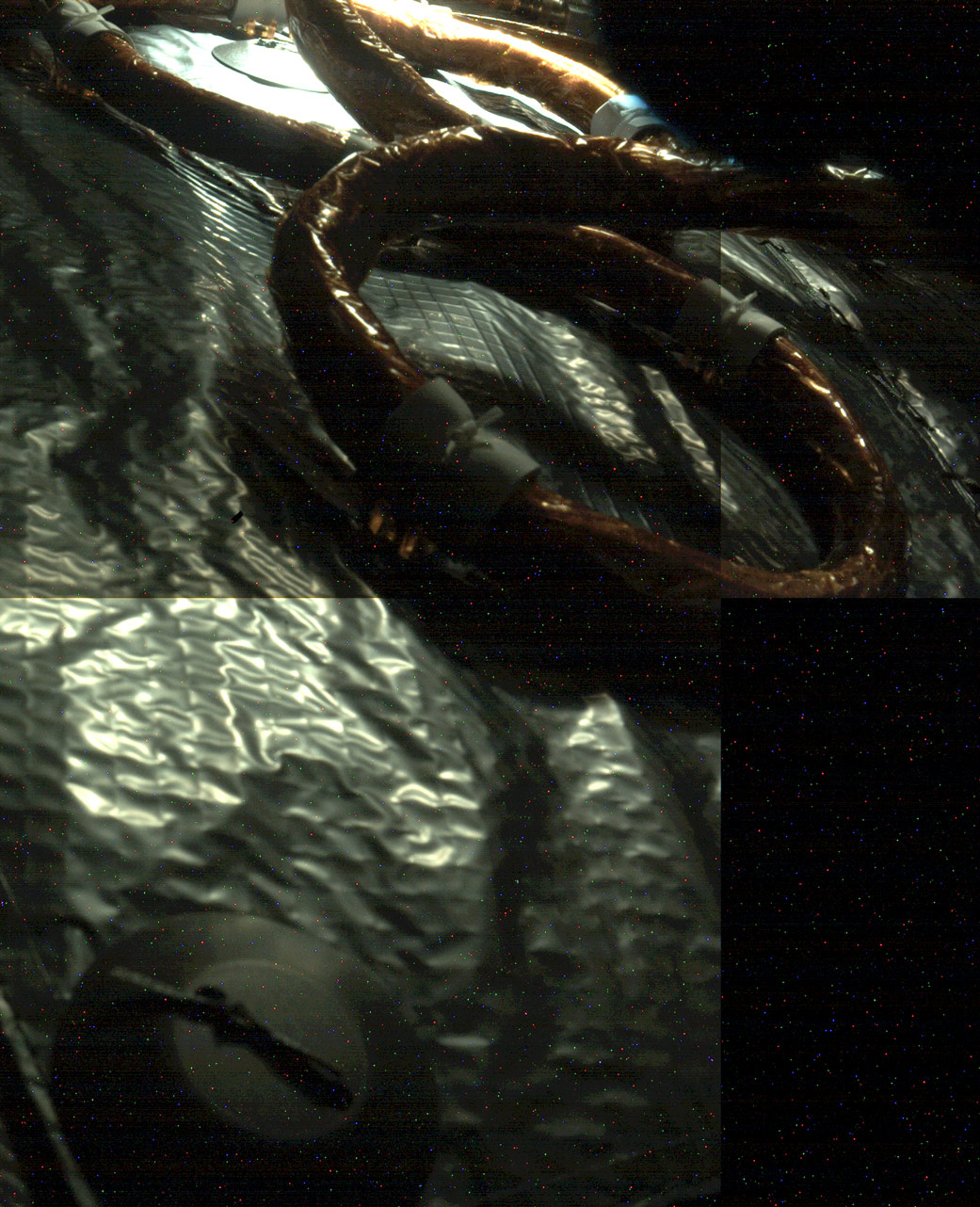
The first to be rigged with microphones, the agency’s latest Mars rover picked up the subtle sounds of its own inner workings during interplanetary flight.
A microphone aboard NASA’s Mars 2020 Perseverance rover has recorded the sounds of the spacecraft as it hurtles through interplanetary space. While another mic aboard the rover is intended specifically to listen for the laser zaps of the SuperCam instrument, this one is devoted to capturing some or all of the entry, descent, and landing (EDL) sequence – from the firing of the mortar that releases the parachute to the Mars landing engines kicking in to the rover wheels crunching down onto the surface.
Data for the 60-second audio file was collected on Oct. 19 during an in-flight checkout of the camera and microphone system that will pick up some of the landing drama at Mars’ Jezero Crater early next year.
You can listen to the sound file here:

Good Vibrations
As any fan of cinematic sci-fi knows, the vacuum of space is a less-than-optimal environment for auditory transmissions. But that doesn’t mean sound can’t find another way. Sound waves can travel through solid objects. When these mechanical vibrations are registered by an electrical component, they sometimes are turned into an electrical signal. (Anyone listening to music through in-ear headphones may have encountered this phenomenon as a rustling or thumping noise when the headphone cord brushes up against a surface.)
The sound file was processed by DPA Microphones of Alleroed, Denmark, which manufactured the EDL microphone hardware flying on Mars 2020.
“As great as it is to pick up a little audio on spacecraft operations in-flight, the sound file has a more important meaning,” Gruel added. “It means that our system is working and ready to try to record some of the sound and fury of a Mars landing.”
The EDL microphone was not tailor-made for this mission – or space exploration – and the team does not know quite what to expect from their sound files of landing day.
“Getting sound from landing is a nice-to-have, not a need-to-have,” said Gruel. “If it doesn’t happen, it will not impede the rover’s mission of discovery at Jezero Crater one bit. If even a portion of the landing sequence is captured on audio, that would be awesome.”
Humanity’s most sophisticated rover is traveling to the Red Planet with the Ingenuity Mars Helicopter. Together, they will enter the Martian atmosphere on Feb. 18, 2021, at 12:47 p.m. PST (3:47 p.m. EST) and will touchdown at Jezero Crater 410 seconds later.

More About the Mission
A key objective of Perseverance’s mission on Mars is astrobiology, including the search for signs of ancient microbial life. The rover will characterize the planet’s geology and past climate, pave the way for human exploration of the Red Planet, and be the first mission to collect and cache Martian rock and regolith (broken rock and dust).
Subsequent missions, currently under consideration by NASA in cooperation with ESA (European Space Agency), would send spacecraft to Mars to collect these cached samples from the surface and return them to Earth for in-depth analysis.
The Mars 2020 mission is part of a larger program that includes missions to the Moon as a way to prepare for human exploration of the Red Planet. Charged with returning astronauts to the Moon by 2024, NASA will establish a sustained human presence on and around the Moon by 2028 through NASA’s Artemis lunar exploration plans.
JPL, which is managed for NASA by Caltech in Pasadena, California, built and manages operations of the Perseverance rover.
For more about Perseverance:
For more information about NASA’s Mars missions, go to:
DC Agle
Jet Propulsion Laboratory, Pasadena, Calif.
818-393-9011
Grey Hautaluoma / Alana Johnson
NASA Headquarters, Washington
202-358-0668 / 202-358-1501
grey.hautaluoma-1@nasa.gov / alana.r.johnson@nasa.gov
2020-223


























